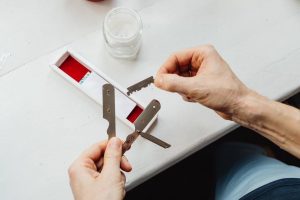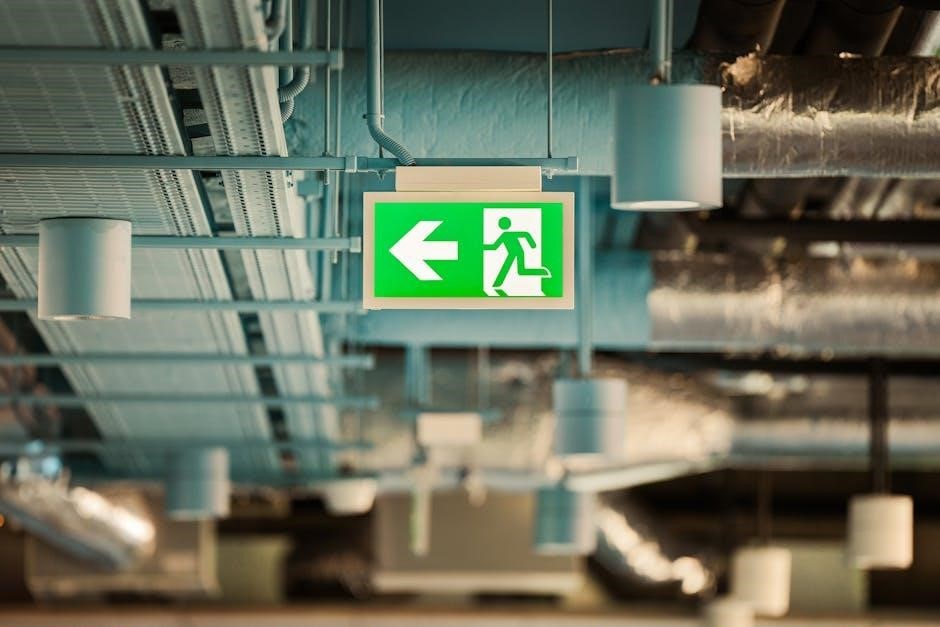
Arrows are central to archery‚ consisting of shaft‚ fletching‚ nock‚ and point. Essential for precision‚ they come in various types and materials. Proper selection and tuning ensure optimal performance and accuracy.
1.1 The Role of Arrows in Archery
Arrows are the heart of archery‚ playing a vital role in achieving accuracy and precision. Their design‚ including the shaft‚ fletching‚ nock‚ and point‚ ensures proper flight dynamics. The arrow’s spine‚ or flexibility‚ must match the bow’s draw weight and arrow length for optimal performance. Properly tuned arrows enhance accuracy‚ while incorrect spine can lead to inconsistent shots. Archers must consider arrow type‚ material‚ and weight based on their discipline‚ whether target shooting‚ hunting‚ or traditional archery. Experts recommend using arrow spine charts to select the right stiffness‚ ensuring arrows fly straight and true. Correct arrow selection and tuning are crucial for mastering archery.
1.2 Importance of Arrow Selection
Choosing the right arrow is crucial for optimal performance and safety in archery. Arrows must match the bow’s specifications‚ including draw weight and arrow length‚ to ensure proper flight and accuracy. Incorrect arrow selection can lead to inconsistent shots‚ reduced precision‚ and potential damage to equipment. The arrow’s spine‚ or stiffness‚ plays a key role in determining how it performs when shot. Experts recommend using arrow spine charts to find the ideal stiffness for your setup. Proper arrow selection enhances accuracy‚ consistency‚ and overall shooting experience. Neglecting this step can result in poor performance and safety hazards‚ making it essential for archers to prioritize correct arrow choice.
History of Arrows
Arrows have ancient origins‚ used by early civilizations for hunting and warfare. Their design evolved over centuries‚ adapting materials and techniques to enhance performance and accuracy.
2.1 Ancient Use of Arrows
Arrows have been integral to human history‚ with earliest use dating back to the Stone Age. Used for hunting and warfare‚ they were crafted from wood‚ stone‚ and sinew. Ancient civilizations like Egyptians‚ Greeks‚ and Asians employed arrows with unique designs‚ such as poison-tipped heads. The development of composite bows further enhanced arrow efficiency. Fletching‚ made from feathers or plant fibers‚ improved accuracy. Regional variations in arrow design reflected local materials and warfare tactics. Arrows played a pivotal role in shaping ancient societies‚ influencing both survival and conflict resolution. Their evolution over millennia laid the foundation for modern archery practices. Historical records highlight their significance in early human progress.
2.2 Evolution of Arrow Design
Arrow design has evolved significantly over centuries‚ driven by advancements in materials and technology. Early arrows were simple‚ made of wood with stone points‚ but later incorporated feather fletching for better flight stability. The introduction of metal points enhanced lethality and durability. Modern arrows feature carbon fiber‚ aluminum‚ and composite materials‚ offering improved strength‚ consistency‚ and precision. Fletching transitioned from natural feathers to durable plastics. Arrow points now vary for specific uses‚ such as broadheads for hunting or target points for competition. Continuous innovation in design and materials has optimized arrow performance‚ ensuring greater accuracy and versatility for archers worldwide. This evolution reflects human ingenuity and demand for excellence in archery.
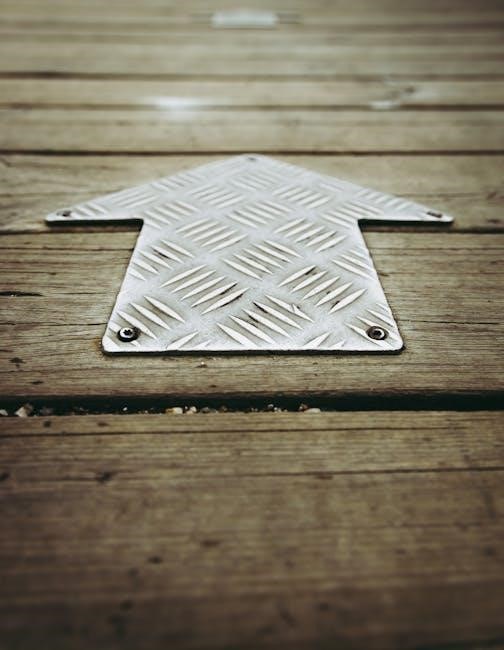
Components of an Arrow
An arrow consists of a shaft‚ fletching‚ nock‚ and point. The shaft provides structural support‚ while fletching enhances stability. The nock ensures proper bow alignment‚ and the point determines functionality.
3.1 Arrow Shaft
The arrow shaft is the structural foundation‚ determining accuracy and performance. It must be straight and consistent‚ with proper spine alignment to match the bow’s draw weight. Available in materials like carbon fiber‚ aluminum‚ wood‚ or composite‚ each offers unique benefits. Carbon fiber arrows are durable and lightweight‚ ideal for precision. Aluminum arrows provide consistent performance‚ while wooden shafts are preferred for traditional archery. Composite materials combine strength and flexibility. The shaft’s length and weight are critical‚ affecting arrow flight dynamics. Proper spine stiffness ensures optimal energy transfer‚ enhancing accuracy. Choosing the right shaft material and specifications is vital for achieving consistent shots and maximizing archery success.
3.2 Fletching
Fletching consists of feathers or synthetic materials attached to the arrow shaft‚ enhancing stability and accuracy. It creates aerodynamic control‚ preventing wobbling during flight. Proper fletching improves arrow direction‚ ensuring straighter shots. Materials vary‚ with feathers offering a traditional feel and synthetic options providing durability. The number and angle of fletches affect performance; more fletches increase stability but may reduce speed. Fletching placement is crucial‚ with uniform spacing ensuring balanced flight. Regular inspection is necessary to maintain effectiveness. Whether for target archery or hunting‚ well-designed fletching is essential for optimal arrow performance and precision.
3.3 Nock
The nock is a critical component at the rear of the arrow shaft‚ designed to securely attach the arrow to the bowstring. It ensures proper alignment and consistent release‚ affecting accuracy and performance. Nocks can be simple notches or mechanical devices with adjustable springs for better reliability. Proper installation and alignment are vital to prevent arrow misfires. Regular inspection is necessary to maintain functionality. Whether traditional or modern‚ the nock plays a key role in the arrow’s performance‚ ensuring smooth and precise shooting experiences for archers of all skill levels.
3.4 Arrow Point
The arrow point‚ or tip‚ is a vital component determining the arrow’s function and purpose. It is designed for specific tasks‚ such as target shooting‚ hunting‚ or traditional archery. Points vary in shape‚ size‚ and material‚ with common types including bullet points for penetration‚ field points for practice‚ and broadheads for hunting. The point’s durability and sharpness directly impact performance. Proper selection ensures effectiveness‚ while maintenance‚ like sharpening or replacing points‚ is essential for consistent accuracy. Safety precautions‚ such as handling points carefully‚ are crucial to prevent injury. The arrow point’s quality and design significantly influence the overall shooting experience and success.
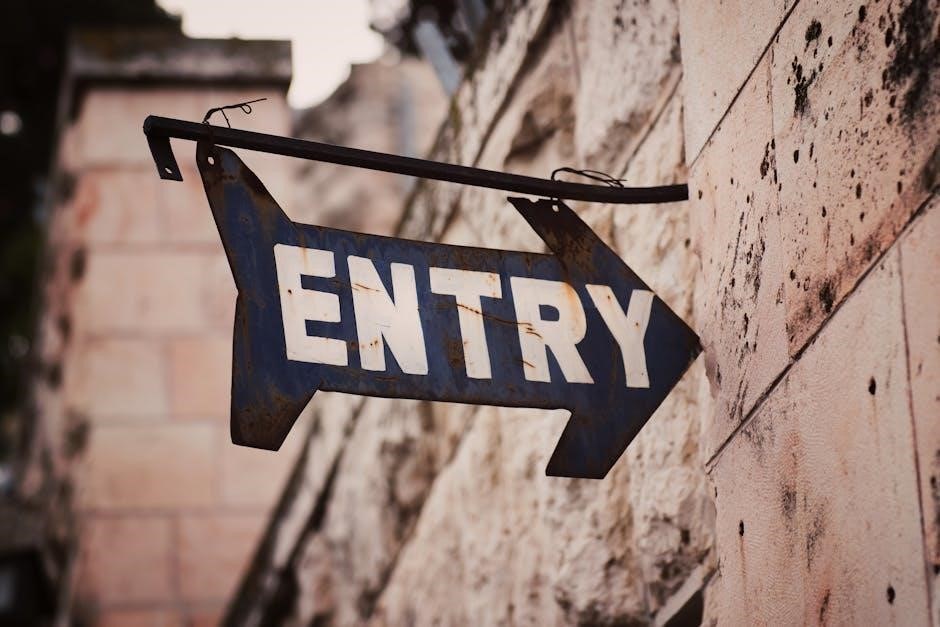
Types of Arrows
Arrows are categorized into target‚ hunting‚ and traditional types. Each serves specific purposes‚ ensuring accuracy‚ durability‚ and effectiveness for various archery disciplines and applications.
4.1 Target Arrows
Target arrows are precision-engineered for accuracy in competitive archery. Often made of carbon fiber or composite materials‚ they feature slim profiles and durable construction. Their lightweight design enhances speed and consistency‚ while tight tolerances ensure reliability. Fletching is typically smaller to reduce wind resistance‚ and nocks are precisely aligned for consistent release. Points are designed for minimal target damage‚ preserving both the arrow and the target. These arrows are tailored for archers seeking optimal performance in controlled environments‚ making them ideal for tournaments and practice sessions aimed at achieving high scores and improving technique.
4.2 Hunting Arrows
Hunting arrows are built for durability and penetration‚ essential for ethical hunting. They typically feature sturdy shafts made from carbon fiber or aluminum‚ with broadheads that expand on impact‚ ensuring a humane kill. The fletching is often more robust to withstand high-speed flights and varying weather conditions. Nocks are designed for reliability‚ and arrow points are specialized for different game‚ from small to large targets. Weight and spine are optimized for kinetic energy transfer‚ maximizing effectiveness. These arrows are crafted for both accuracy and power‚ making them indispensable for hunters seeking reliable performance in the field.
4.3 Traditional Arrows
Traditional arrows are crafted from natural materials‚ often featuring hand-carved wooden shafts‚ natural feather fletching‚ and simple nocks. These arrows are favored for their historical authenticity and aesthetic appeal. Designed for both functionality and tradition‚ they are commonly used in historical reenactments and primitive archery practices. The arrow points are typically forged from metal or stone‚ with broadheads for hunting and target points for competitions. Traditional arrows emphasize simplicity and craftsmanship‚ appealing to archers who value heritage and a connection to the sport’s roots. They are lightweight and durable‚ making them suitable for various shooting styles while preserving the essence of archery’s timeless tradition.

Arrow Materials
Arrows are made from carbon fiber‚ aluminum‚ wood‚ or composite materials. Each offers unique benefits in durability‚ weight‚ and performance‚ catering to different archery needs and preferences.
5.1 Carbon Fiber Arrows
Carbon fiber arrows are renowned for their exceptional durability and consistency. They offer a high strength-to-weight ratio‚ making them ideal for both target shooting and hunting. Their slim profile reduces wind resistance‚ enhancing accuracy. Carbon fiber arrows are resistant to bending and cracking‚ ensuring longevity. Archers often choose them for their reliability and performance across various conditions. With advancements in technology‚ they remain a top choice for professionals and enthusiasts alike‚ providing precision and power in every shot;
5.2 Aluminum Arrows
Aluminum arrows are a popular choice due to their durability and consistent performance. They are less prone to bending and offer a cost-effective option for archers. Aluminum arrows are heavier than carbon fiber arrows‚ which can affect flight dynamics‚ but they provide excellent reliability. Many archers prefer them for hunting and target shooting because of their strength and resistance to wear. While they may not be as lightweight as carbon fiber‚ aluminum arrows are a versatile and economical option for those seeking a balance between performance and affordability‚ making them a staple in many archers’ arsenals.
5.3 Wooden Arrows
Wooden arrows are a timeless choice‚ cherished for their traditional appeal and craftsmanship; Made from high-quality wood‚ they are often handcrafted‚ offering a unique aesthetic. Archers who value heritage and classic archery methods frequently choose wooden arrows. They provide a natural feel and can be tailored to specific needs. However‚ they require more maintenance than metal or carbon arrows‚ as they are susceptible to moisture and environmental factors. Proper care ensures longevity‚ making them a favorite for historical reenactments and enthusiasts of traditional archery. Wooden arrows are a beautiful blend of artistry and functionality‚ preserving the essence of archery’s roots while delivering consistent performance.
5.4 Composite Materials
Composite arrows combine materials like carbon‚ aluminum‚ and fiberglass for exceptional durability and performance. They offer a balance of strength‚ flexibility‚ and weight‚ making them ideal for both target shooting and hunting. Composite arrows are less prone to damage than traditional wooden ones and provide consistent accuracy. Archers appreciate their versatility‚ as they can be customized to suit various bow types and shooting styles. Additionally‚ composite materials reduce the risk of splintering and cracking‚ ensuring reliability in different environmental conditions. Their modern design and resilience make them a popular choice among archers seeking high-quality‚ long-lasting arrows for precise and powerful shots.
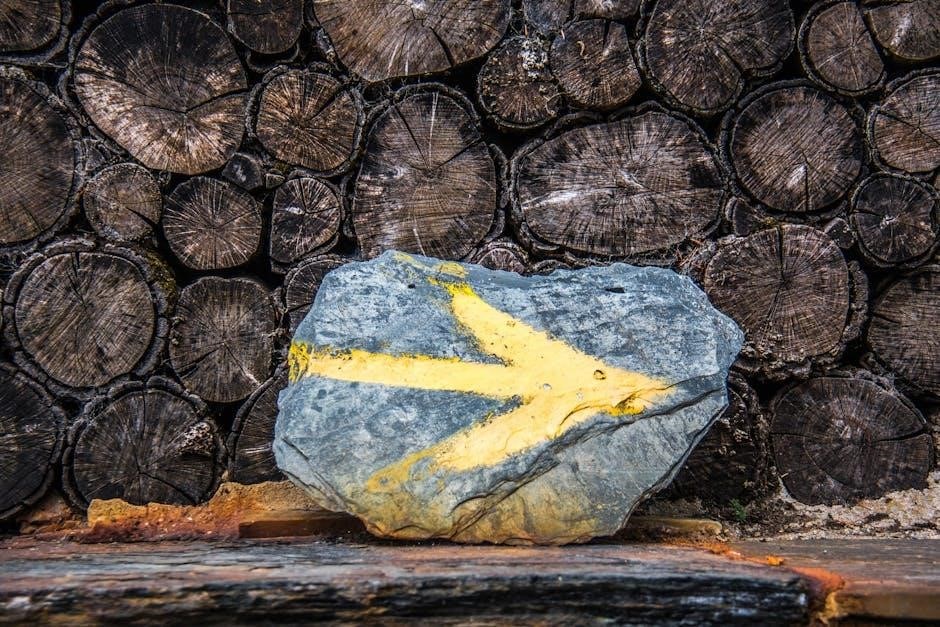
Arrow Tuning
Arrow tuning involves matching spine to bow setup for optimal accuracy. Use spine charts based on draw weight and arrow length. Test by shooting groups to ensure precision.
6.1 Understanding Arrow Spine
The arrow spine refers to its stiffness‚ crucial for accuracy. A bow’s draw weight and arrow length determine the ideal spine. Too stiff or too flexible reduces precision. Proper spine ensures consistent flight‚ minimizing deflection upon release. Manufacturers provide charts to match spine with specific setups. Testing arrow groups at varying distances helps confirm the right spine. Achieving optimal spine balance is key for consistent performance and tighter shot groups.
6.2 Using Arrow Spine Charts
Arrow spine charts are essential tools for selecting the right arrow stiffness. Manufacturers provide these charts to help match arrow spine with bow setups. By inputting draw weight‚ arrow length‚ and point weight‚ archers can determine the optimal spine. Charts vary by bow type‚ such as recurve or compound. Proper consultation ensures arrows fly straight and consistently. For recurve bows‚ adding 1-2 inches to measured draw length is recommended. Using spine charts ensures accuracy and performance‚ eliminating guesswork. This step is crucial for both beginners and experienced archers to maximize their shooting potential and achieve tighter groups.
6;3 Testing Arrow Spine
Testing arrow spine ensures optimal performance and accuracy. Archers shoot groups at varying distances to observe arrow behavior. Proper spine alignment results in consistent grouping‚ while incorrect stiffness causes erratic flight. Bows with higher draw weights require stiffer arrows. Testing involves adjusting spine based on performance‚ ensuring arrows fly straight and true. This process is vital for precision and reliability‚ helping archers achieve their best shots. Regular testing maintains peak performance‚ ensuring arrows remain matched to the bow setup. It’s a critical step in refining equipment for both target and hunting scenarios‚ guaranteeing consistent results.

Selecting the Right Arrow
- Match arrow spine to bow draw weight and arrow length for optimal performance.
- Measure arrow length to ensure proper fit and comfort during shooting.
- Choose arrow weight based on archery discipline and personal preference for accuracy.
7.1 Matching Arrow to Bow
Matching the arrow to the bow is crucial for accuracy and performance. The arrow’s spine must align with the bow’s draw weight and arrow length to ensure proper flight. Using an arrow spine chart helps determine the correct stiffness based on these factors. Incorrect matching can lead to poor accuracy or even damage to the equipment. Proper fitting ensures the arrow rests securely on the bow‚ optimizing energy transfer during the shot. Consulting with an archery professional can provide personalized recommendations for the best arrow-to-bow combination‚ guaranteeing a precise and powerful shot every time. This step is essential for both beginners and experienced archers.
7.2 Measuring Arrow Length
Measuring arrow length is a critical step in ensuring proper fit and performance. The standard measurement is from the back of the arrow point to the throat of the nock. For most archers‚ the arrow should be at least 1-2 inches longer than their draw length to prevent the arrow from falling off the bow’s rest during use. This extra length ensures safety and consistency in shooting. When cutting arrows to size‚ it’s important to follow the manufacturer’s guidelines to maintain arrow integrity. Properly measured arrows enhance accuracy‚ reduce wear on equipment‚ and optimize energy transfer for a smoother shot. Always double-check measurements for the best results.
7.3 Choosing Arrow Weight
Choosing the right arrow weight is crucial for optimal performance and safety. Lighter arrows offer faster speeds‚ ideal for hunting‚ while heavier arrows provide greater stability and penetration‚ often preferred for target shooting. The weight should align with your bow’s draw weight and your shooting style. Arrows that are too light may lack stability‚ while those that are too heavy can reduce speed and accuracy. Consider the arrow’s kinetic energy for hunting purposes‚ ensuring it meets legal requirements. Always consult an arrow spine chart or a professional to balance weight and spine stiffness for your setup‚ ensuring accuracy and minimizing equipment damage.

Arrow Maintenance
Regular cleaning‚ proper storage‚ and timely repairs are essential for maintaining arrow performance. Inspect for damage‚ clean gently‚ and store in a dry‚ secure location to ensure longevity.
8.1 Cleaning Arrows
Cleaning arrows is crucial for maintaining their performance and longevity. Use a soft‚ dry cloth to wipe down the shaft‚ fletching‚ and point. For tougher dirt‚ dampen the cloth with water or a mild soap solution‚ but avoid harsh chemicals. Never submerge arrows in water‚ as this can damage the materials. Inspect for any damage or wear during cleaning. After cleaning‚ ensure the arrows are completely dry to prevent rust or moisture damage. Regular cleaning prevents dirt buildup‚ ensuring consistent accuracy and reliability. Properly cleaned arrows will perform better and last longer‚ making maintenance a key part of archery practice.
8.2 Storing Arrows
Proper storage is essential to maintain arrow condition and performance. Store arrows in a cool‚ dry place‚ away from direct sunlight and moisture. Use a protective case or quiver to prevent damage. Avoid extreme temperatures‚ as they can affect arrow materials. Keep arrows upright or horizontally in a secure container to prevent bending or warping. Regularly inspect stored arrows for signs of wear or damage. Do not store arrows in damp environments‚ as moisture can cause rust or degradation. Proper storage ensures arrows remain in optimal condition‚ ready for use. Protecting your arrows is a key part of archery maintenance and longevity.
8;3 Repairing Damaged Arrows
Inspect arrows regularly for damage‚ such as bent shafts‚ loose fletching‚ or chipped points. Clean arrows with a soft cloth to remove dirt and debris. For minor damage‚ replace fletching or nocks using specialized tools. Straighten slightly bent shafts carefully to avoid further damage. Use arrow repair kits for fixing cracks or splits. Replace severely damaged components or the entire arrow if necessary. Store repaired arrows separately and test their performance before use. Proper repair extends arrow lifespan and ensures reliability. Addressing damage promptly prevents further issues and maintains accuracy. Always follow manufacturer guidelines for repairs to guarantee safety and performance.

Shooting Form and Arrow Placement
Proper shooting form and arrow placement are crucial for consistent accuracy. Stand comfortably‚ align the arrow with the bow’s rest‚ and maintain a steady grip. Ensure the draw length matches your stance‚ with the arrow nocked correctly. Keep the bow arm steady and focus on your target for optimal performance.
9.1 Proper Shooting Technique
A proper shooting technique involves a consistent stance‚ grip‚ and alignment. Stand with feet shoulder-width apart‚ knees slightly bent‚ and bow arm relaxed. Grip the bow gently but firmly‚ keeping the drawing hand steady. Align the arrow with the bow’s sight and ensure the string is at the anchor point‚ typically near the corner of the mouth. Maintain focus on the target‚ breath steadily‚ and release smoothly. A consistent release ensures accuracy. Regular practice and form checks with a coach or experienced archer help refine technique. Proper technique minimizes fatigue and enhances precision‚ making every shot count.
9.2 Arrow Placement on the Bow
Proper arrow placement on the bow is crucial for accuracy and consistency. Align the arrow nock with the bowstring and ensure it sits securely in the arrow rest. The arrow should be straight and level‚ with the index vane (if present) aligned with the bow’s sighting system. Gently place the arrow on the rest‚ ensuring it clicks into place for stability. The arrow should extend slightly beyond the rest to prevent interference during the shot. Proper alignment and secure placement prevent arrow fall-off and ensure a clean release‚ optimizing accuracy and performance. Always double-check placement before drawing the string.
9.3 Aiming and Releasing
Accurate aiming and a smooth release are critical for consistent shots. Start by drawing the string to your anchor point‚ maintaining proper form. Focus on your target‚ aligning the arrow with your sighting system. Ensure the arrow is level and straight. A steady hand and consistent release are key to precision. Avoid snapping the string‚ as this can disrupt accuracy. Practice a smooth‚ controlled release‚ following through with your shot. Proper follow-through enhances consistency‚ while a jerky release can throw off your aim. Regular practice helps develop muscle memory‚ leading to more accurate and reliable shots over time.

Safety Precautions
Always handle arrows safely‚ inspecting for damage before use. Store arrows separately from bows to prevent accidental discharge. Follow proper guidelines to ensure secure storage.
10.1 Handling Arrows Safely
Handling arrows safely is crucial to prevent accidents. Always inspect arrows for damage before use‚ ensuring nocks‚ fletching‚ and points are secure. Store arrows in a protective case or quiver when not in use to avoid damage or accidental discharge. Never leave arrows near children or in unsecured locations. When handling arrows‚ avoid touching the points to prevent injury. Keep your fingers away from the arrow nock when drawing or releasing the bowstring. Regularly check arrow shafts for straightness and signs of wear. Proper handling ensures longevity and reliability of your arrows‚ enhancing both safety and performance during archery sessions.
10.2 Inspecting Arrows Before Use
Inspecting arrows before use is essential for safety and performance. Check for visible damage‚ such as cracks‚ dents‚ or bent shafts‚ and ensure all components like nocks‚ fletching‚ and points are secure. Verify arrow length matches your draw length and bow specifications. Look for signs of wear on fletching and nocks‚ as these can affect accuracy. Use a spine chart to confirm arrow stiffness aligns with your bow’s draw weight. Regular inspections prevent accidents and ensure consistent performance. Always follow manufacturer guidelines for maintenance and replacement. Proper inspection habits extend arrow lifespan and enhance shooting reliability in archery.
10.4 Safety Guidelines for Storage
Proper storage of arrows is crucial for safety and longevity. Store arrows in a cool‚ dry place‚ away from direct sunlight and moisture. Use protective cases or quivers to prevent damage and bending. Avoid stacking arrows horizontally without support‚ as this can cause warping. Keep arrows upright or in a specialized storage rack to maintain their shape. Regularly inspect stored arrows for signs of wear or damage before use. Always store arrows out of reach of children and pets to prevent accidents. Following these guidelines ensures arrows remain in optimal condition and reduces the risk of injury or malfunction during use in archery.
Understanding arrows is key to mastering archery. From materials to tuning‚ proper selection and maintenance ensure accuracy and safety. Continuous learning and practice enhance archery skills and performance effectively.
11.1 Summary of Key Points

Understanding arrow design‚ materials‚ and tuning is crucial for archery success. Proper selection of arrow type‚ spine‚ and weight ensures optimal performance. Regular maintenance and safety checks are essential for reliability. Matching arrows to bow specifications enhances accuracy and consistency. Practicing proper shooting form and arrow placement improves precision. Staying informed about arrow components and advancements in technology helps archers refine their skills. Whether for target shooting or hunting‚ selecting the right arrows tailored to the discipline ensures better results. Continuous learning and adaptation to equipment needs are key to mastering archery.
11.2 Final Tips for Arrow Use
Always use arrow spine charts to ensure proper bow-arrow alignment. Measure arrow length accurately‚ ensuring it matches your draw length. Regularly inspect arrows for damage and cleanliness. Store arrows in a dry‚ secure place to maintain integrity. Practice proper shooting form to maximize accuracy and consistency. Experiment with different arrow types and materials to find your optimal setup. Stay informed about advancements in arrow technology to enhance performance. Remember‚ consistent practice and proper arrow care are key to mastering archery. By following these guidelines‚ archers can optimize their skills and achieve their goals effectively.
